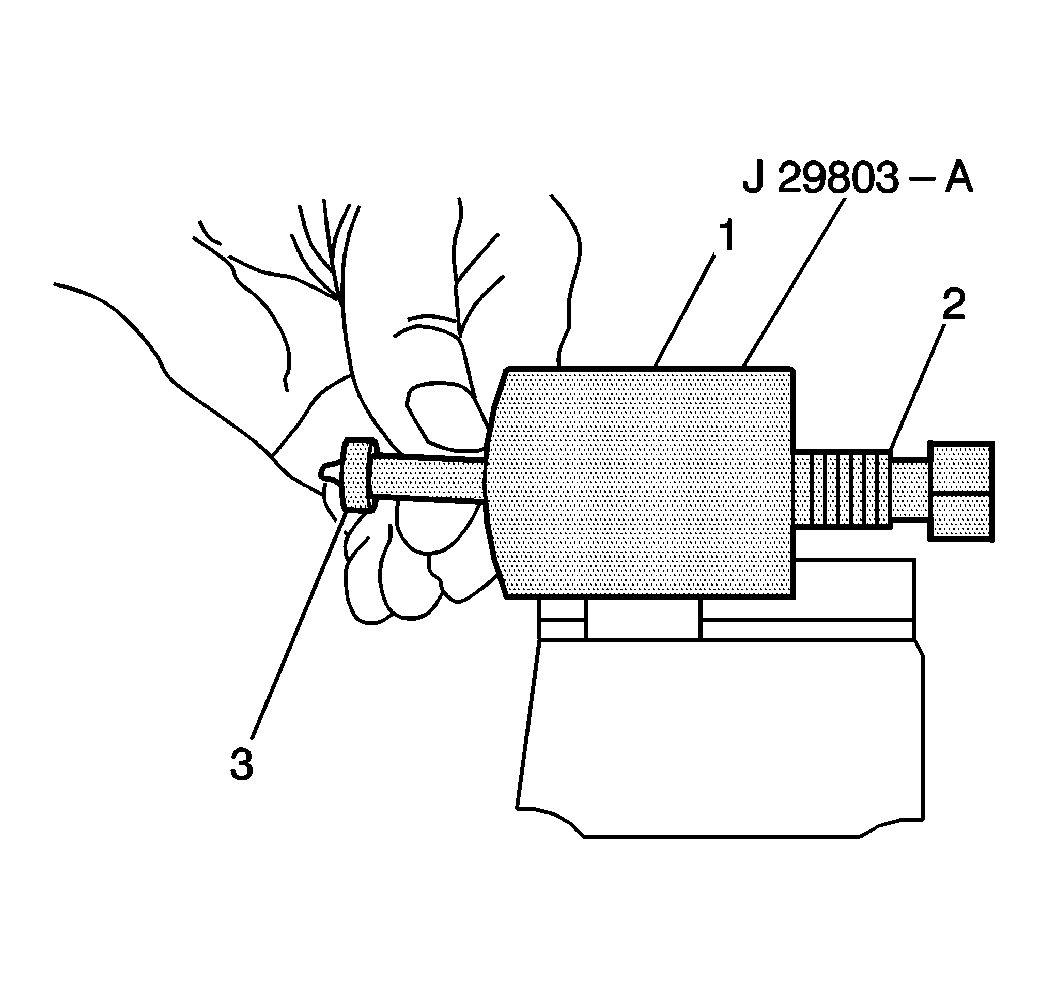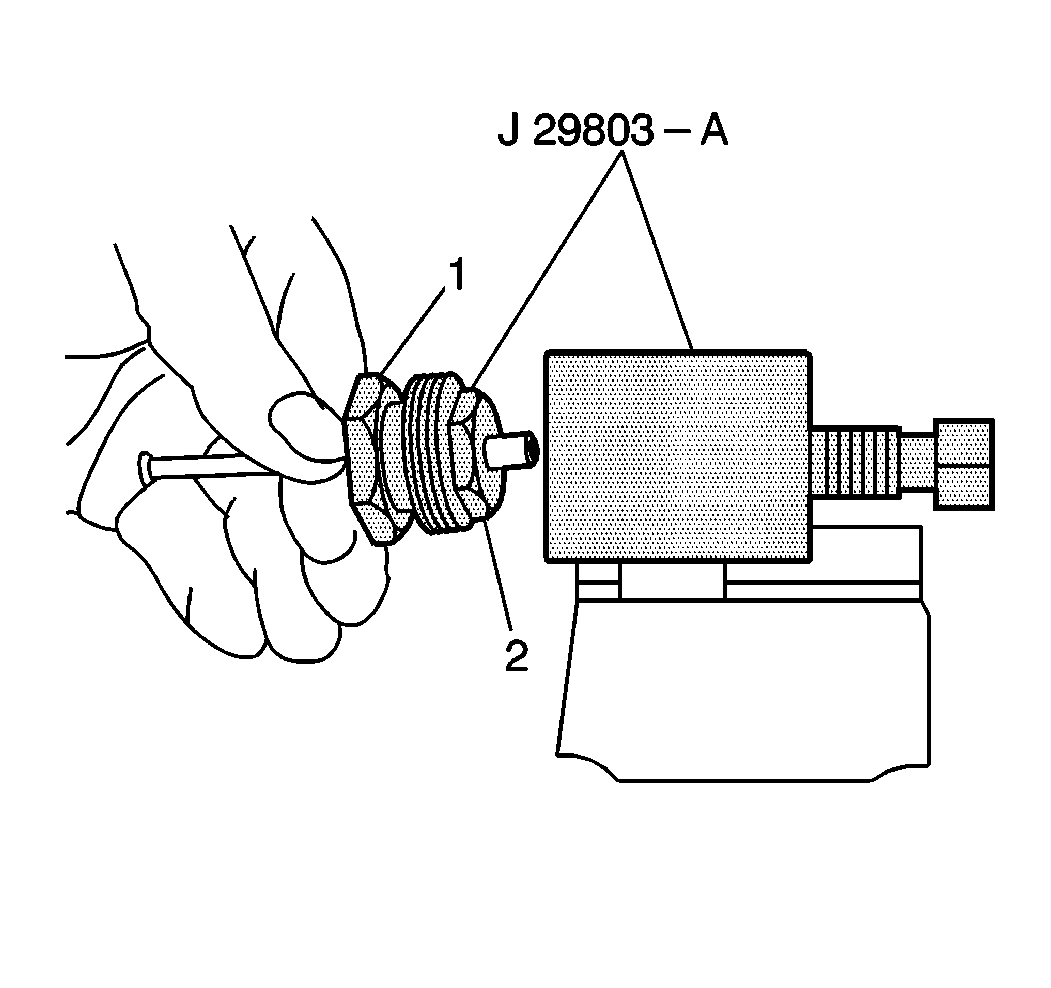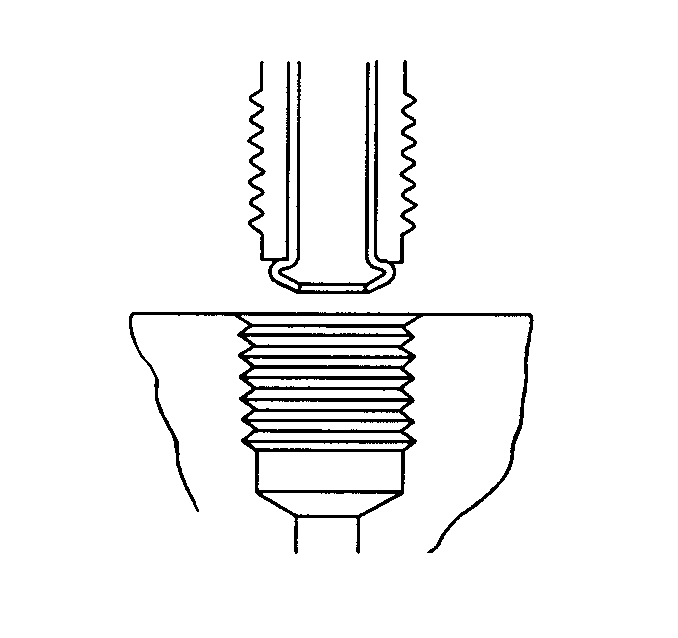For 1990-2009 cars only
- Obtain the recommended tubing and steel fitting nuts of the correct size. Use the outside diameter tubing in order to specify the size.
- Cut the tubing to length. Determine the correct length by using a string in order to measure the old pipe. Add 3 mm (1/8 in) for each ISO flare.
- Before starting the flare, install the fittings on the tubing.
- Chamfer the inside and outside diameter of the pipe with the de-burring tool.
- Remove all traces of lubricant from the brake pipe and the flaring tool.
- Clamp the flaring tool body (1) in a vise.
- Select the correct size collet and forming mandrel for the pipe size used.
- Insert the proper forming mandrel (3) into the flaring tool body.
- Hold the forming mandrel in place and rotate the forcing screw (2) clockwise until the forcing screw contacts the forming mandrel (3).
- Turn the forcing screw counterclockwise one rotation.
- Slide the clamping nut (1) over the brake pipe and into the correct collet (2). Leave approximately 19 mm (3/4 in) of tubing extending out the collet.
- Insert the collet into the tool body. The brake pipe end must contact the face of the forming mandrel.
- Tighten the clamping nut into the tool body very tight or the pipe may push out.
- Wrench tighten the forcing screw until the screw bottoms. Do not overtighten the forcing screw or the flare may become oversized.
- Back the clamping nut out of the tool body.
- Disassemble the clamping nut and collet. The flare is now ready for use.
- Bend the pipe to match the old pipe. Maintain a clearance of 19 mm (3/4 in) for all moving or vibrating components.



